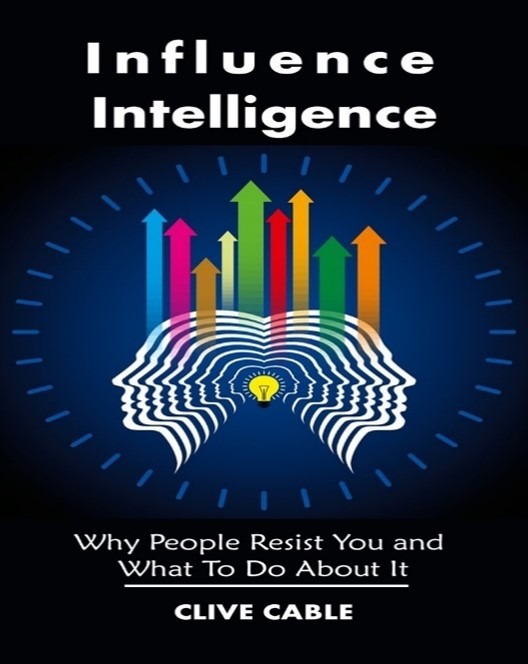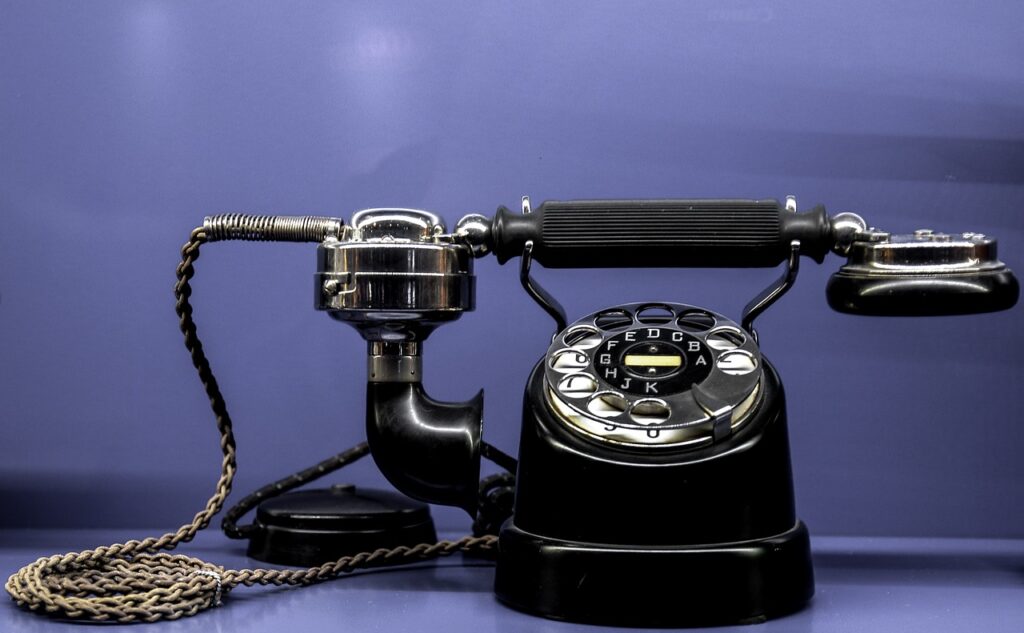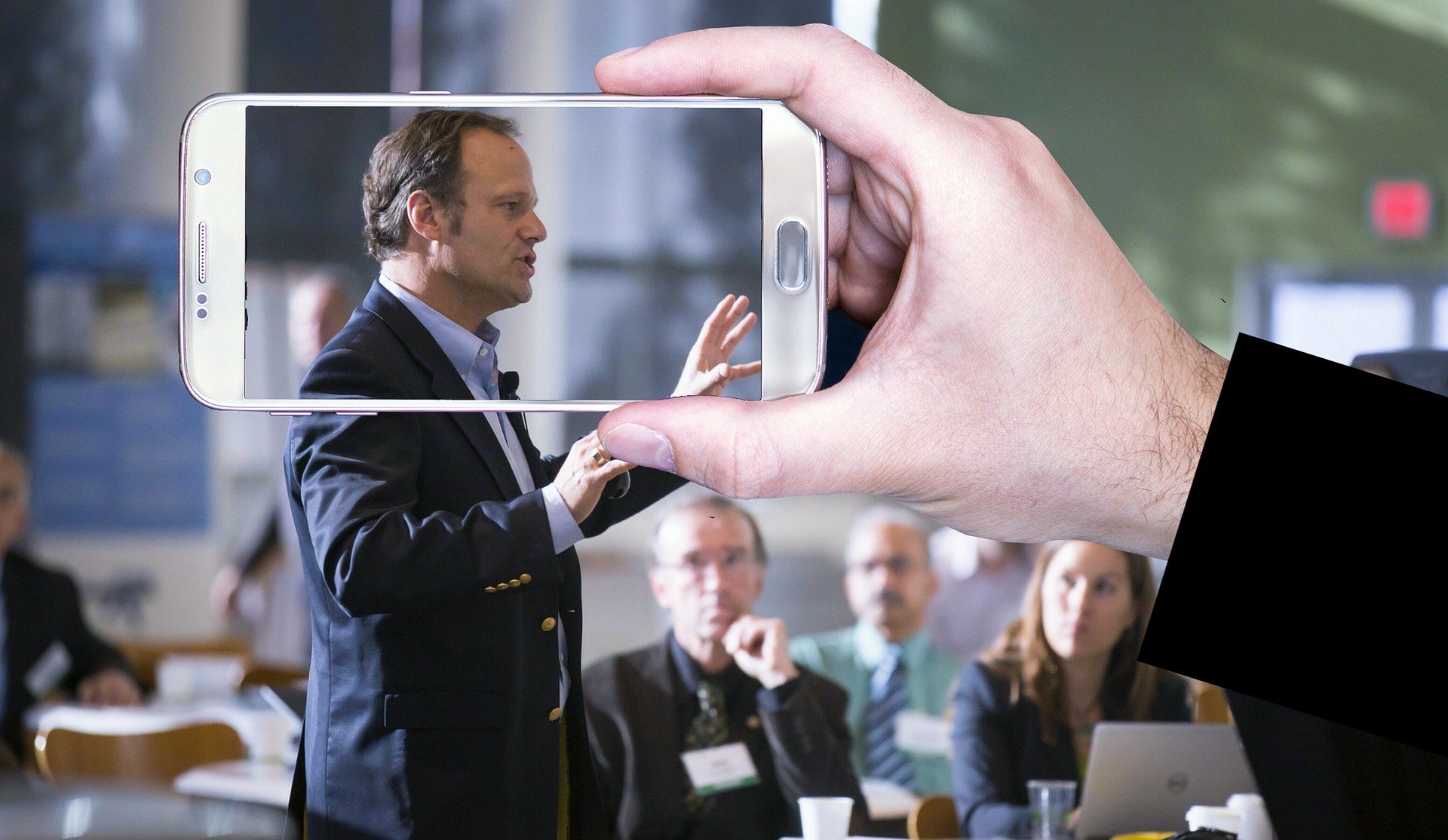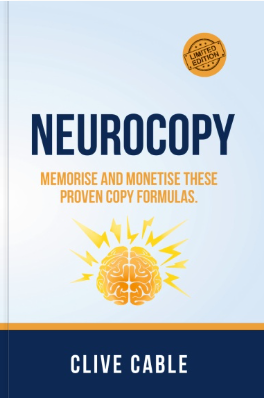Do you hate the thought of having to go out selling to get new clients?
In this article you are going to discover an easy way to get new clients with little or no resistance from the marketplace.
- You don’t need to be extroverted.
- You don’t need to be a slick professional who brushes his hair with buttered toast.
- And you don’t need to sell yourself in any way.
To get new clients is hard.
Email is risky because of the spam laws, etc.
Phone prospecting is out of the question. No one answers call from strangers anymore.
Direct mail has a better chance but it’s hard to write well enough to win a new client.
Giving talks, presentations and guest speaking at events is a viable yet difficult prospect.
It may be very effective at reaching new clients fast, but you must write a speech (or get it written for you), deliver the speech well and be able to inspire audience members to become clients.
And what if you’re an introvert and only like talking to people you already know?
And what if you’re the type of person who does nothing to get new clients because you overthink things?
Use these 124 words to get new clients without selling.
Hold fire because there is good news.
The two things you need are existing clients and 124 words.
Did you know it’s sixteen times easier to sell something to an existing client than it is to get a new client?
Sixteen times easier, that’s insane.
Knowing that who would want to solicit business from strangers.
Ah yes, I hear you say, but what if none of my clients can buy anything else from me?
No problem, I’ve got you covered (as they say).
You use 124 words with each good client you have, and they will help you get new clients.
But you must use several steps to set it up so the 124 words can do their magic.
Keys to help you get new clients.
“A terrible thing happens when you don’t promote your business – NOTHING.” PT Barnam.
Step one.
Use pre-suasion. You plant seeds in the minds of your clients early on in your relationship.
How?
(I’m glad you asked.)
You say things like, “I’m changing the structure of my business. I don’t believe advertising is the best way forward for us. I believe my new structure for my business is spending more time serving my clients and finding out how to serve them better.
That way I can ask my clients to refer us to people they know.”
Step two.
Ask how you can serve them better.
You can do this by asking them “on a scale of 1 – 10 how do you think we as a company are performing for you?”
If it’s anything less than a ten ask, “what can we do to make that a 10 for you?”
Wait for their response and if you can do what they ask and it fits with the fee you’re currently charging say, “I can do that for you.”
Step three.
Make a pact with them. List all the things you’re doing for them and include what you’ve just agreed to do for them. (Go for a list of 8 things.)
Then say, “I’m happy doing all of these eight things for you. Could I ask you something?”
They’ll reply with a yes.
Would you be willing to do something for me?
They’ll usually say something like, “That depends on what it is.”
You then say, would you give some thought to who you know who doesn’t like to be taken in by a business that would do a shoddy job or even fleece them. But instead, would like to go with someone they can trust like you can with us.
They will say yes.
And you leave it there, change the conversation and leave them feeling good about you and your company.
Step four.
A couple of weeks later take them to lunch.
During lunch you use the 97 words that will get you new clients each time.
Warning…
You will need to rehearse these 124 words, so they come across as genuine. All the best actors rehearse their line so they can put their personality into their work. It’s the same with singers.
The last thing you want is to forget what you want to say.
Listen, if you screw this up then it’s back to spending a fortune on advertising, going to networking events, wasting money online all in futile efforts that are dodgy at best and useless at worst.
If you do great work for your clients, why wouldn’t they want to help you?
If the tables were turned, wouldn’t you want to help someone who has done fantastic work for you?
Years ago, I was asked to help someone build a business from scratch. He had no clients, no business plan, and no money. Let’s called him Kevin.
Kevin had just sold his house to pay off some debts and had to move into a rental property knowing he could only survive for two months, otherwise he, his wife and kids would be out on the street.
He told me he had a potential client to meet the next day. I discovered he was a business coach with no business.
Hmmm… now there’s a real challenge I thought.
“Buy me a beer or two and I’ll write you a script that will get you clients whenever you need them.” I said.
Three pints later he had his script. “Call me tomorrow and let me know how you got on.” I told him.
When he phoned me, I was totally thrown off guard by what he said. I never thought those words I gave him would have such an impact.
Here’s what he told me.
“I did what you said and stuck to the script word for word. My prospect paused for what seemed like a whole minute. Then he said, if you give me that script, I’ll do business with you. So, I did, and he signed up there and then.”
The last time I spoke to Kevin I found out he makes £75,000 a year.
He has been making that every year for the last 24 years.

Want to know how much he spends on marketing?
Nothing.
My only regret is only doing that for three pints of beer.
Step five.
The 124 words that will get you all the clients you will ever need.
These words will have an almost magical effect on your clients. But you must have done the first four steps first, otherwise they won’t work.
After lunch you switch the conversation. (Remember to rehearse first.)
And you begin the process by using these words.
“You couldn’t do me a small favour could you?
You wouldn’t happen to know just one person who is just like you who would benefit from my services (here you describe what you’ve done for them that made them want to say thank you.)
Don’t worry, I’m not looking for their details right now, but who was it you were thinking of?
That’s the first 46 words. They don’t sound intimidating to you, do they?
Do you think you could look your client in the eye and say them?
Of course, you can.
Now for the next 82 words.
“You couldn’t do me a further favour could you? Next time you see (name) could you tell him a little bit about what it’s like to do business with me. And see if he is open minded about taking a phone call from me to see if I can help him in the same way I’ve helped you? Would it be okay if I gave you a call next week to see how your chat went with (name)?”
Here’s why this works so well.
In Britain most people tend to speak in the negative. That is to say they are indirect and try as hard as they can not to be rejected.
Let me throw some light on the subject.
“You couldn’t close that window for me, could you?
Now that’s hard to reject. No really, I mean are you going to tell them to close it themselves?
I don’t think so.
You couldn’t carry on reading, could you?
(Sorry, got carried away with myself.)
Meanwhile back at the main plot…
When you phone them to ask if they spoke to their friend, make polite conversation for a minute or so then say,
“I’m guessing you didn’t get around to speaking with (name)?”
The idea is not to sound needy or pushy, but rather to give them an out if they’ve forgotten or let them correct you.
Should you prefer not to wait for the words “thank you,” then use the following…
Word of caution first though, just in case.
You must be in rapport with your client BEFORE asking for a referral.
Here is an excerpt from my book, “Influence Intelligence…” about getting rapport.

How to build rapport fast.
The ‘Unconscious’ hello
People send out a signal ahead of saying the word “hello” and they are looking for recognition from others. They may or may not know the other person, but they are looking for a friendly response. If they get it, they will follow their initial signal with a smile or something similar. For example, someone nods their head in your direction, you nod back, they smile, you smile, and now, to them, you are a friend.
Shifting weight
People hold their body a certain way. Some people when they sit on a chair that’s comfortable may move their body to one side or another. When you act like their mirror, they become more receptive to you below their conscious awareness.
Moving parts
People will cross their arms and legs or uncross them. They may have particular ways of placing their legs when sitting, or putting their hands on their laps, etc. Copying them as they do it as if you were a mirror they are looking at, is great for connecting. If you want to be more subtle, when they fold their arms, you cross your legs, and vice versa.
Gestures
If they move their hands while they talk to express themselves more fully, you do the same when you talk. Visually oriented people tend to do this kind of animation, because it makes them more engaging and they love to be the centre of attention. (Never copy their gestures while they are talking.) Others rub their legs when they talk, copy anything they do while they talk.
Matching their descriptive words
People lean on certain words to describe their sensory reality. These are visual words, sounding words and internal or external feeling words. Also, there is another group of words that may not describe in sensory- rich terms, but nonetheless seem to for these people. Usually they are more analytical in nature than the other three. These are what I like to call non-descriptive words.
Visual words include:
look . . . see… imagine . . . picture this . . . it appears to me . . . brilliant . . . clear . . . colourful . . . envision . . . glance . . . light . . . focus . . . lay eyes on . . .reveal . . . view . . . symbolic . . . visible . . . vivid . . visualise . . . point of view.
Auditory words include:
Sounds good to me . . . announce . . . listen . . . hear . . . talk . . . be all ears. . declare . . . harmony . . . whisper . . . quite . . . hush, hush . . . in tune with . . . loud . . . outspoken . . . heard . . . said . . . noisy . . . silent . . . shhhh . . .speak . . . talk . . . tell . . . verbalise . . . softly . . . I hear what you’re saying.
Feeling words include:
Grasp. . . get a grip. . . get a hold of. . . I can’t handle this. . . catch my drift. . . are you catching on. . . ? feel. . . get in touch. . . firm hold. . . or firm grip. . . get the hang of. . . hanging around. . . got a funny feeling. . . gives me the creeps. . . . gut feeling. . . heated. . . make contact. . . shake on it. . . sense. . . reach out. . . stroke. . . sticky. . . touch base. . . tender. . . warm. . . under the thumb.
Non-descriptive words include:
Analyse, balance, be conscious of, one does, one should, call to mind, organise, logical, comprehend, understand, relate to, come to mind, decide, consider, complex, evaluate, weigh up the consequences, plan, process, learn about, convincing, question, sort out, remember, think, study, quantify, uncertain, judge, informed, scan, sequence,
Once you are certain you have good rapport continue with…
(Name), you know over the years I’ve found all successful people have one thing in common and I’m sure you’re no different. I’ve found that all successful people like to see other people grow, improve and become more successful.
Who do you know who has their own business?
(All you want to do at this stage is get him to give you names.)
Who do you know who runs their own coaching business?
Do you know someone who is a consultant?
Who else do you know that gives talks in public?
Who are some of the associates you might go to a Round Table, Rotary, or Toastmasters with?
(All you want to do at this stage is to get as many names as you can, and once you’ve got these names you will then qualify them. Asking for more and more information).
Who do you know that’s just started their own business?
(Be poised as if you’re about to start writing. Have no eye contact, just look at the page and wait. Staying quiet.)
(Start filling out the names starting at number 10 and when he runs out of initial names ask the next prompt.)
Who do you know that you go to toastmasters with, or round table or Rotary?
(Again, if he runs out of names use the next prompt.)
Who are some of the associate companies that buy products from you?
(Each time you ask one of these questions, put your head down and just fill in the names.)
Normally once they get to five names the say something like, Danny I’ve run out of names.
Okay I believe you.
Qualifying.
Peter, if you were me, which one of these would you contact first?

(When he gives you an answer say…)
Peter, do me a favour and give Mary a call right now and tell her what I do.
(Peter will do a great job of selling you and will hand the phone over to you…)
At the end of that call ask Peter if he would have any objections to calling the rest of those people over the next few days and mention my name and that I’ll be phoning them.
(This always eases the tension and helps you get in the door.)
When you go in and talk to the prospect for the first time, tension levels are pretty high. Always get the client to talk about themselves first.
Past – present – future method.
How did you get started in this business?
Tell me about your past successes?
Tell me about your present situation?
Where do you see yourself five years from now?
In preparation for this meeting, I put myself in your situation and I thought there may be some questions on your mind such as:
- Who am I?
- Who is my company?
- What’s in it for you?
- What’s in it for me?
Use this script when yopu want to get new clients.
Peter, I’m only telling you this because most professionals like yourself like to deal with other professionals, isn’t that right?
Let me tell you about my company.
(What’s in it for you… make it easy…)
All I want to do is take a photo of where you are right now and take a photo of where you want to go and see if I can help you get there with what I do.
(What’s in it for me)
I get paid in 2 ways.
If you like me and believe I can help you I’d like us to business together.
And the other way is If you like the way I conducted myself today, my professionalism,
I’d like you to give me 2 or 3 referrals, does this sound reasonable to you?
Why clients don’t want to give you referrals.
They don’t want to upset their friends. They want privacy. They fear you won’t be around in a few years’ time.
What if clients say, “don’t use my name.” Now you have ten suspects not ten prospects.
Would you mind telling me why? Because I only work from referrals.
A low-pressure way of getting referrals.

Jim, if you and I were to swap jobs today who would be the first three people you would call on?
Ask for specifics when asking for referrals. Get as much information as possible. Ask for permission to use their name. Contact the referral as soon as possible. Inform your client of the outcome.
Give a reward to the one who gave you the referrals. Prospect for referrers as well.
Tell your clients you expect referrals from them.
Every lunch time take a client to lunch. No selling takes place. They must bring a friend or one of their clients.
Centres of influence.
Look out for these people….
Find out everything about them. Try and do something to help them. Maybe send them some clients. Or do the 10 ideas strategy.
Networking.
Make sure you get at least 15 cards every time you go to a networking meeting.
If it’s the chamber, ask if you can speak for 10 minutes.
Have a great elevator pitch memorised.
Always make notes on the back of their business card.
Anything that allows you to remember who gave you the card.
Arrange a time to call when you get the business card. Usually within two days to set up an appointment.
Look for ways of working together instead of thinking, what can I sell him or her.
Hi Nancy, can you remember we met at xyz meeting last week. What I’d like to do is meet with you and see if there if there are any areas of common interest where we could assist each other or where our products could help each other. Could we get together on Wednesday, or Thursday?
Keep in regular contact. Keep your face in front of them all the time.
Why am I going to this? Is it worth my time? Who are the key people I want to meet?
Set a goal to get at least 10 cards.
Meet new people when you go to these meetings.
Research before the meeting so you know who you really want to meet.
Take business cards. A small notepad. Breath freshener, deodorant. Arrive early. Meet the people who are organising the event, ask them if you can help them. Wear your badge on the right-hand side. Memorise their name.
Make a feelgood call before making referral calls.
Find reasons to send thank you notes to the people you know.
Get 50% of your business from 5 clients and focus massively on them.
Elevator pitch.
I’m happy to tell you what I do, but first tell me what you do so I can see if there is a way in which we can work together.
If you must give an elevator pitch keep in short and sweet.
Mine is, “What I’m interested in doing is helping other businesses grow and reach their full potential.”
Always, always, ALWAYS ask a question as soon as you’ve given your elevator pitch.
Like this, “Who do you know who want more from their business, like more time, more money or more freedom?”
Habits That Build Powerful Relationships.

Make connection calls.
The connection call is used to gather information on each person you’ve met to see if they could become a mastermind member.
Make once a year call.
You might want to make this a happy birthday call. Or find some other reason to legitimately stay in contact with acquaintances.
Think of it as a “life support” call. Joe Girard made the Guinness Book of records 13 times as being the best car salesman in America. How did he do it? By sending out a card once a month to his buyers with a simple message on it. That message was, “I like you.” Then he signed his name.
You don’t need to go to that extent, but at least once a year reach out to your contacts to wish them happy birthday or happy anniversary from the day you first met. About 5 to 10% of these contacts will reciprocate and call you on your birthday, keeping in contact as you did. You’ll never know where this could lead if you don’t try it.
Make significant life event calls.
A life event call is the most powerful strategy because it puts your relationships on steroids.
In Harvey Mackay’s fine book “How to swim with the sharks without being eaten alive,” there is something he calls the “Mackay 66.” He aims to keep 66 facts about someone he’s done business with so he can make life event calls.
The idea is to acknowledge some life event: birth, death, engagement, marriage, health issue, etc. They grow the roots of the “relationship tree” deeper and faster than any other relationship building strategy.
Network.
Organising your own unique networking group.
I used to run a business club called, “Rainmakers.” This strategy worked very well for me. And when I gave the club to a good friend of mine at the time, h used it to build his business.
Do guest speaking for other business clubs. Speaking engagements are probably the most efficient networking tool available.
One speaking engagement can mean 30 or more potential clients/customers or new relationships.
Public speaking sets you apart from the masses. It is a competitive advantage.
Volunteer.
I will join a non-profit group and eventually get all the board or run one or more committees.
Non-profit groups are a very valuable resource for referrals. It allows you an opportunity to showcase your skills and develop long-lasting relationships.
Referrals come from every direction… Fellow members… Vendors… Donors… And beneficiaries of the organisation. Most or members on non-profits are very successful, wealthy individuals who have strong, powerful relationships. Joining a non-profit grants you access to this treasure trove of valuable relationships of other volunteers.
Examples of non-profit organisations are the Lions Club, Rotary club, chambers of commerce, and local business groups.
You could also join advisory boards of community businesses.
Mastermind groups.
Participate in formal or informal mastermind groups that include trade groups, business groups, and common interest groups.
Informal groups include weekly or monthly meetings or phone calls with a select number of like-minded people who are all pursuing something in common, whether a similar goal, similar business, or similar activity.
The informal mastermind groups typically have no more than five or six participants.
In summary.
When you begin to use these ideas, you may become a little nervous. That’s okay. If something is worth doing well, it’s worth doing badly at least at first.
I remember a time when that applied to me. I used to belong to a running club in Sturminster Newton.
Each year members would put on little shows for their fellow runners at the Christmas party.
One of the runners I befriended was a brilliant jazz guitarist, while I was a rank amateur.
He convinced me to join him on stage to play to the running club members.
I had never stood up in front of an audience, let alone played in front of anyone.
I remember looking down at my hands as I played the first song. My fingers were shaking. I was half amazed and half scared out of my skin. I have no idea how – but I played on.
We got to the end of our songs, all four of them. Imagine my surprise and horror when the crowd shouted, “encore!”
Luckily my guitar playing friend go me off the hook by saying, “he doesn’t know any more tunes.”
Please, please, PLEASE, only practice these scripts on people who like you lots.
I promise you the rewards are worth it.
You’ll find your clients will like you even more.
You’ll feel better about yourself. Your new client will be eager to work with you.
And the best news???
You’ll easily get new clients.
And all of your new clients will already be pre-sauded to give you referrals.
Want an unfair advantage over 98% of ordinary copywriters?
Forget the basic copy formulas that no longer work. BAB (Before and After Bridge) PAS (Problem Agitate Solve) AIDA (Attention – Interest – Desire – Action) buyers are immune to these.
BUT the 13 ways to intensify desire, the One Belief 10 Questions or the 12 Proof Elements – all sales copy must have are these proven million dollar winners.
They are all here (and more) inside this book.





